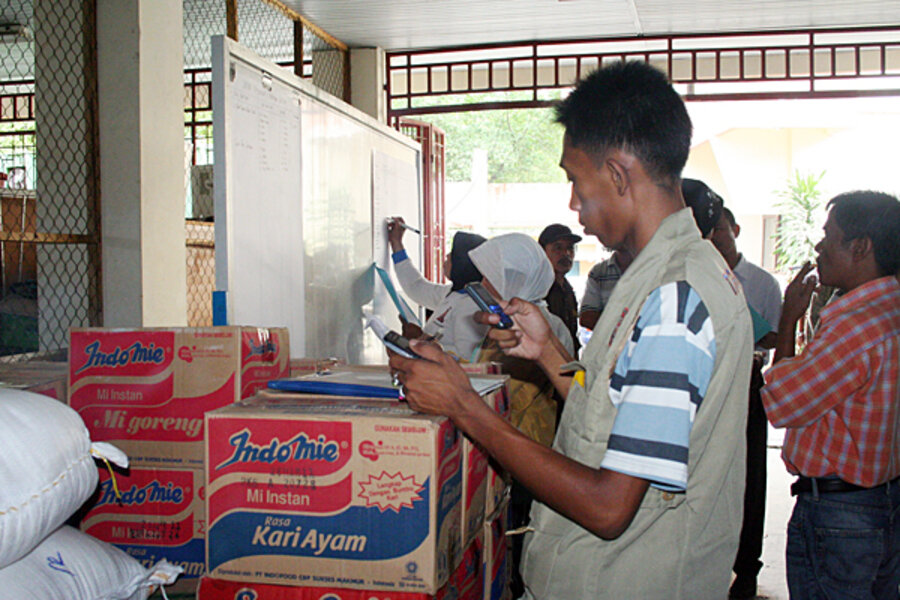By boat and by air, aid slowly arrives to Indonesia tsunami victims
Loading...
| Jakarta, Indonesia
Days after a tsunami hit the Mentawai Islands in western Indonesia, the government has put a relief plan into action that includes emergency air drops and tons of aid supplies. But the fact that the string of islands off the coast of Sumatra is so remote, is posing challenges for large-scale relief efforts.
Hours after Monday's 7.7-magnitude earthquake triggered the 10-foot-high wave, small aid organizations and volunteers in Padang quickly sprang to action. Through satellite phone communications with survivors they determined what supplies were most needed. Local rescue groups then began gathering clothing, soap, and tarps for the boat journey to Pagai, the island closest to the quake’s epicenter.
But a plan for actually getting the much-needed aid to the islands has been harder to achieve. The only options for reaching the islands are by air or sea, so a relief plan has to work around the weather. The director of one grassroots rescue team said roughly 30 charter boats were preparing to depart over the next 24 hours – though monsoon rains have stalled their departure. Large cargo ships, which can handle rougher weather, can take up to 48 hours to make the more than 150-mile journey from Sumatra.
IN PICTURES: Indonesia tsunami
A cargo plane packed with 16 tons of supplies, including tents, medicine, food, and clothing arrived Wednesday, according to disaster officials. By evening four helicopters had touched down in Sikakap, on North Pagai.
Soetrisno, the deputy for emergency management at the National Disaster Management Agency, said aid would continue to arrive by air, but that helicopter use was limited because it could only carry about 600 kilograms of supplies compared to the 30 tons large ships could transport. Some worry the cost of getting aid out by air will hinder efforts. The government, meanwhile, is providing $100,000 for initial aid efforts, and officials say more money will be made available if needed.
Soetrisno said the government was using helicopters provided by the military and was hoping two more ships would reach the islands before morning. From Sikakap, which is serving as the islands’ aid headquarters, small supply cargoes could be delivered by charters.
Aerial surveys of the region revealed crumbled homes, rubble, and submerged land masses. Hundreds of wooden homes have been completely swept away, and 80 percent of the homes in Silabu were severely damaged, the Associated Press reported. An estimated 4,000 people are currently without shelter.
“Now the target is to get out immediate assistance, fulfill the basic needs of internally displaced people, and make emergency repairs to the damaged infrastructure,” said Soetrisno.
Unlike the 2004 tsunami that struck off the coast of northern Sumatra, killing more than 160,000 Indonesians, the response to the latest disaster has been hampered mainly by access. Surfer-supported groups, such as Last Mile Operations and SurfAid International, have begun to provide assistance and search for the scores of villagers that remain missing. Large aid groups, such as World Vision, have also already arrived in Padang and are waiting with supplies to get out to those in need.
The latest figures count 272 people dead and more than 400 missing. The Ministry of Health will deploy a medical team of 15 doctors by helicopter tomorrow, but for now Soetrisno said the number of severely injured victims remains low.
Still, on Wednesday evening President Susilo Bambang Yudhoyono announced that the national and local governments were capable of responding to the disaster.





